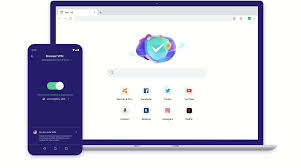In today’s digital era, mobile devices have firmly entrenched themselves in every sector. Our dependence on these gadgets has grown significantly; we use them for education, work, travel, healthcare, shopping, and entertainment. To keep pace with this widespread integration of mobile technology, businesses across various fields are implementing innovative digital transformation strategies that place mobile services at their core. The banking sector is no exception to this transformative wave.

Financial institutions of all sizes and specialities are rolling out a diverse array of online banking services and creating mobile banking applications aimed at delivering an exceptional experience for the vast population of smartphone users—numbering in the billions. Their efforts have been commendable! Just four years ago, approximately 1.9 billion individuals worldwide utilised digital banking services; projections indicate that by 2024, this figure could soar to an impressive 3.6 billion (as reported by Statista). What drives the success of banking apps within the financial services landscape? If you’re seeking tailored mobile banking development solutions, here’s what we can provide.
At Maxthon, we have spent over twelve years crafting applications specifically for the mobile banking sector. Our deep understanding of this market’s target audience allows us to identify key factors that have transformed mobile banking apps into essential tools for consumers. One significant advantage is that users gain control over their financial activities anytime and anywhere they choose. With a banking app at their fingertips, individuals can effortlessly transfer funds, check their savings accounts, pay bills, track spending through digital wallets, review transaction histories, and execute various other tasks whenever they wish.
The feeling of safety has transformed the way we manage our finances. Gone are the days of needing to carry around large amounts of cash and the anxiety that comes with the possibility of losing it or having it stolen. Nowadays, instead of fumbling through wallets to make purchases, individuals simply tap a few buttons on their devices, allowing mobile applications to handle transactions seamlessly.
Time is another area where advancements have made a significant impact. Previously, managing financial matters was a tedious process that required visiting physical bank branches, waiting in long lines, and completing numerous forms just to secure a loan or transfer funds. Today, these tasks can be accomplished in mere minutes—or even seconds—freeing up valuable time for other essential responsibilities.

This digital shift also enhances cost efficiency. By moving services online, banks can lower their operating expenses (OPEX), enabling them to offer customers more attractive pricing options, higher interest rates on savings accounts, exclusive discounts, and various financial perks that enhance the overall banking experience.
Furthermore, modern finance apps provide an array of convenient opportunities beyond just banking. Accessing account information or making grocery payments via smartphone has become commonplace. Additionally, users can easily purchase tickets for sporting events, book hotel accommodations, and pay for rideshare services like taxis—all through their devices—making life simpler and more efficient while enjoying services from various third-party providers.
The impressive array of benefits associated with mobile banking is a key factor behind the consistent expansion of the global mobile banking market, which surpassed $1.3 billion last year and is anticipated to grow threefold by 2030, reflecting an extraordinary compound annual growth rate (CAGR) of 15%. Such remarkable statistics highlight the essential need for financial institutions with ambitious goals to invest in mobile banking app development. To ensure their app’s success, forward-thinking banks must closely monitor emerging trends in mobile banking that are expected to dominate the industry in the near future.
At Maxthon, we specialise in banking software development and continuously observe market dynamics, identifying and analysing trends that will influence the sector for years ahead. As we look into 2024, what new developments are emerging that will remain significant in the coming year? For those interested, our latest article, How to Start a Neobank, offers valuable insights.

A top priority for any mobile banking app is delivering an exceptional customer experience, placing clients at the forefront of design and functionality. Even a technologically advanced application cannot succeed if it proves too complex or fails to address users’ specific challenges. This underscores the importance of adopting a user-centred approach when developing apps within the mobile banking space. Understanding customer needs is crucial for creating solutions that truly resonate with them.
To truly satisfy a customer, it’s essential to grasp their needs, preferences, challenges, and concerns. With the advent of innovative big data tools and financial business intelligence systems, banks are now equipped to analyse customer profiles comprehensively. This enables them to gain a holistic understanding of their target audience and craft tailored engagement strategies that meet the specific requirements of individual clients.
When envisioning the future of mobile banking, one must recognise the significance of artificial intelligence. AI-powered tools are making significant strides in this sector, continuously discovering new applications that enhance IT products used in banking. A prime example is the use of AI-driven chatbots designed to take on roles traditionally held by human staff; these chatbots can effectively manage up to 80% of customer support and personal consulting tasks. However, the role of artificial intelligence in mobile banking extends far beyond just chatbots.

AI also holds immense promise for improving fraud detection. Its capabilities in voice and image recognition can play a crucial role in identifying and thwarting scam attempts before they escalate. Furthermore, when integrated with machine learning algorithms, AI can power predictive analytics tools that help businesses evaluate risks, forecast trends, and streamline operations on various levels.
Security remains a paramount concern within any financial domain since it draws numerous fraudsters and cybercriminals eager to exploit software vulnerabilities. The banking industry is no exception; hacking incidents and data breaches rank among the most pressing security issues faced by mobile banking platforms today. As cybercriminals become increasingly sophisticated in their tactics, relying solely on simple passwords or PINs is no longer sufficient to safeguard customers’ sensitive information or protect their bank accounts from potential threats.
In this scenario, artificial intelligence plays a pivotal role. To meet the industry’s stringent data security standards, a mobile banking application must implement various identification methods, including cellular, Wi-Fi, and device recognition, while also leveraging biometric authentication techniques. These techniques encompass eye scanning, facial recognition, voice identification, and fingerprint analysis. Applications that incorporate biometric security features are significantly more resistant to hacking or duplication, enhancing their status as highly secure IT solutions.

Moreover, the integration of biometric authentication with Internet of Things (IoT) devices is becoming increasingly relevant. A diverse range of wearables—such as smartwatches, internet-connected glasses, fitness trackers, headsets, bright jewellery, and even intelligent luggage—has gained popularity among tech enthusiasts. It is logical to connect these devices within a cohesive network supported by robust IoT frameworks.
When individuals synchronise their wearables with their smartphones, they gain the ability to utilise these devices for various banking activities. This includes making NFC payments and receiving alerts regarding changes in their bank accounts or accessing other financial information seamlessly. Financial institutions stand to gain significantly from incorporating IoT technologies into their banking and payment applications; doing so allows them to collect extensive customer data. This wealth of information can be transformed into actionable insights about consumer habits and spending behaviours—empowering banks to initiate data-driven marketing strategies and tailor services specifically for their client’s needs.
In the fiercely competitive landscape of today’s banking industry, expanding the customer base has become crucial for financial institutions aspiring to establish themselves among the leaders in this sector. One effective strategy to broaden client engagement is by enhancing the accessibility of banking solutions, with voice control serving as a key tool. By incorporating an AI-driven virtual assistant into their banking applications and enabling voice command functionalities, banks can empower individuals with disabilities—such as visual impairments or mobility challenges—to manage tasks like paying bills and transferring funds, along with accessing other features offered by mobile banking.

Additionally, another approach to attract more users involves creating specialised solutions that function well even in low-bandwidth situations, addressing the challenges posed by poor internet connectivity in rural regions.
On another front, traditional banks often exhibit a conservative approach towards digital transformation despite adopting new technologies. Forming alliances with innovative fintech startups and developing a network of APIs can significantly enhance their banking applications. This collaboration not only introduces cutting-edge innovations that fintech companies excel at but also broadens the range of services available—such as peer-to-peer lending, remote deposits, or buy-now-pay-later options—without necessitating substantial investments in-app upgrades. Furthermore, the fresh strategies brought forth by these startups can effectively streamline and simplify existing processes within traditional banks.
A complex reputation marks the landscape of cryptocurrency wallets; while the world of digital currencies is not without its controversies, it is undeniably experiencing significant growth. Currently, there are more than 8,800 active cryptocurrencies in circulation, and this surge naturally leads to an increase in transactions and participants within the market. As a result, forward-thinking banks must recognise the immense potential of this expanding sector and must adapt to the evolving dynamics of the global financial environment.
For those just starting in this arena, it’s advisable to take a cautious approach. Consider integrating a crypto wallet feature into your application that allows users to engage with major cryptocurrencies like Bitcoin or Ethereum. However, it’s essential to stay informed about industry developments and be prepared to broaden your crypto offerings as trends evolve. The trends mentioned earlier are pivotal in shaping the current landscape and are likely to remain influential for the foreseeable future. By leveraging these insights during the development of your banking app, you can position your product as a frontrunner in this competitive space.

Nevertheless, creating an app equipped with cutting-edge technologies that align with recent advancements can be challenging without partnering with an experienced IT vendor. DICEUS boasts a skilled team with extensive expertise in mobile banking solutions capable of delivering high-quality applications on time and within budget. Reach out to us for assistance in developing a well-functioning banking app featuring an elegant design that meets all user needs while exceeding expectations.
If you lack technical know-how or resources, don’t hesitate to connect with professionals who can help you effectively tackle your project challenges.
In conclusion, the widespread use of mobile devices has led to an increase in niche applications that provide consumers access to various services. Mobile banking apps have gained worldwide recognition as efficient digital tools that offer quick and secure financial services across multiple categories.
To ensure their app remains relevant and attuned to the latest industry trends, its creators must embrace a multifaceted approach that incorporates cutting-edge technology.
Leveraging AI-powered capabilities will enable the app to analyse user behaviour, predict trends, and offer personalised experiences that resonate with users. This intelligent integration can enhance functionality and provide insights into emerging patterns within the sector.
Moreover, implementing robust data protection mechanisms is essential to maintain user trust and comply with regulatory standards. By prioritising security measures such as encryption and secure access protocols, developers can safeguard sensitive information from potential breaches.

Integrating the app with a network of wearable devices will expand its usability and create seamless interactions for users. This connectivity fosters engagement and encourages a more active lifestyle, appealing to health-conscious individuals seeking real-time feedback on their physical activities.
Equipping the application with a cryptocurrency wallet could also tap into the growing interest in digital currencies, providing users with an easy way to manage their assets securely. Such features not only attract tech-savvy users but also open avenues for innovative financial solutions.
It is paramount to prioritise customer experience at every stage of development. A well-designed interface that ensures ease of use will significantly enhance user satisfaction while fostering loyalty.
Finally, ensuring broad accessibility by accommodating diverse platforms and varying levels of technological proficiency will allow more individuals to benefit from the app’s offerings. By thoughtfully considering these strategies, creators can better position their app as a leader in an ever-evolving landscape.
Maxthon
Maxthon has unveiled an impressive suite of digital upgrades designed to enhance your online browsing experience. At the forefront is a significantly improved rendering engine, which enables users to load web pages at remarkable speeds, particularly those rich in multimedia content. Additionally, the browser features seamless cloud synchronisation that links your bookmarks, browsing history, and settings across all devices—whether you’re on a desktop, tablet, or smartphone—ensuring a consistent and fluid experience while surfing the web.
One of its key highlights is a powerful ad blocker that can be activated with ease. This built-in tool effectively eliminates disruptive ads and boosts page loading times, creating a more enjoyable environment for users. Another innovative aspect is the split-screen browsing capability that allows users to view two web pages simultaneously. This feature is handy for research purposes or product comparisons, eliminating the need to switch between tabs constantly.

Maxthon also includes a resource sniffer tool that makes it easy to locate downloadable media files on any webpage. This handy feature allows you to save videos and music directly from your browser without requiring additional software. For those who appreciate personalisation, Maxthon provides an array of themes and layouts that enable you to tailor your browsing interface to suit your preferences. Adjusting these settings can significantly enhance usability and overall satisfaction.
Privacy-conscious individuals will find value in Maxthon’s extensive privacy protection tools. Features such as incognito mode and anti-tracking technology work together to shield your online activities from unwanted scrutiny. Finally, Maxthon supports Progressive Web Apps (PWAs), further expanding its functionality and enriching the user’s browsing experience even more.
